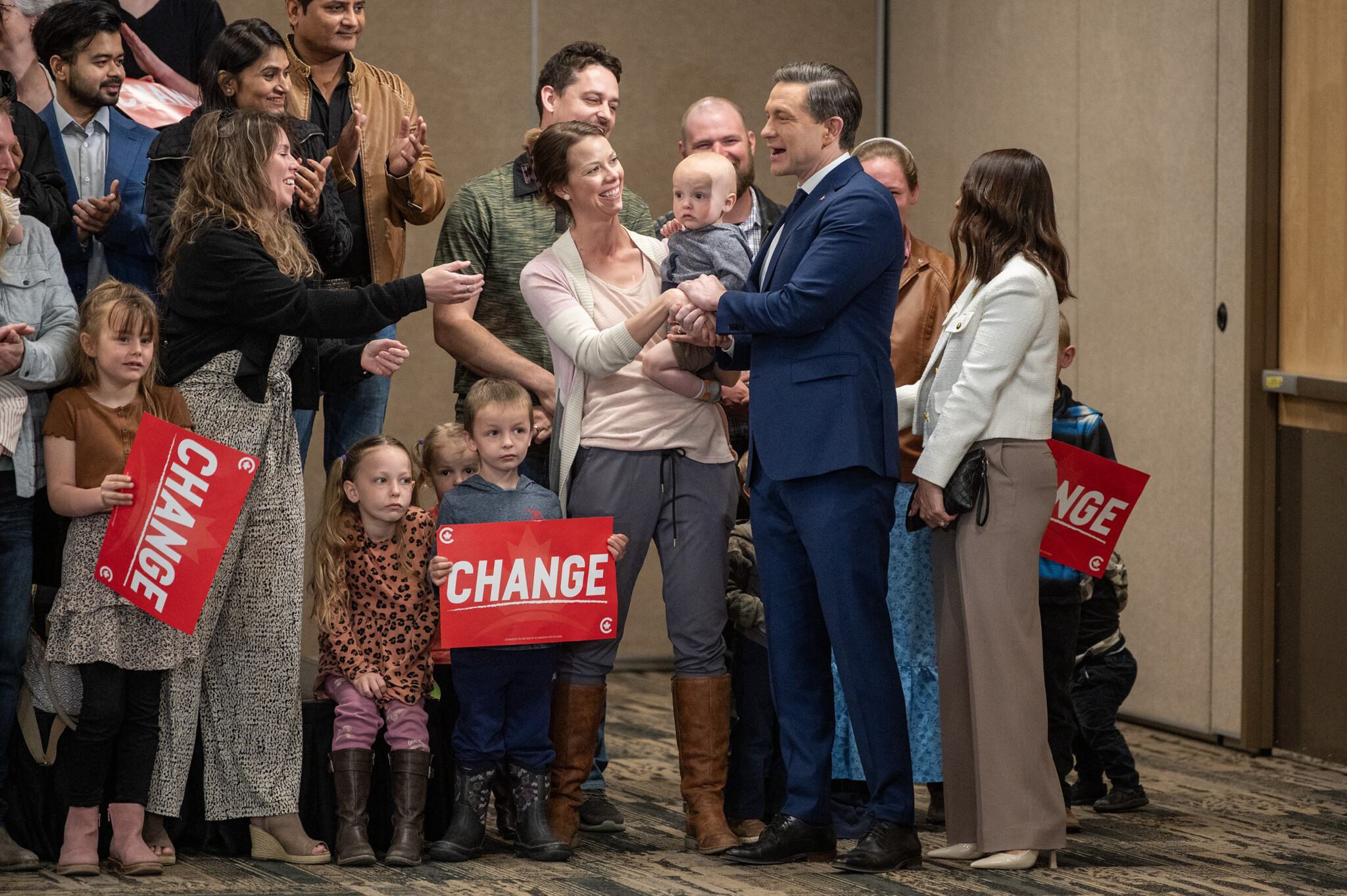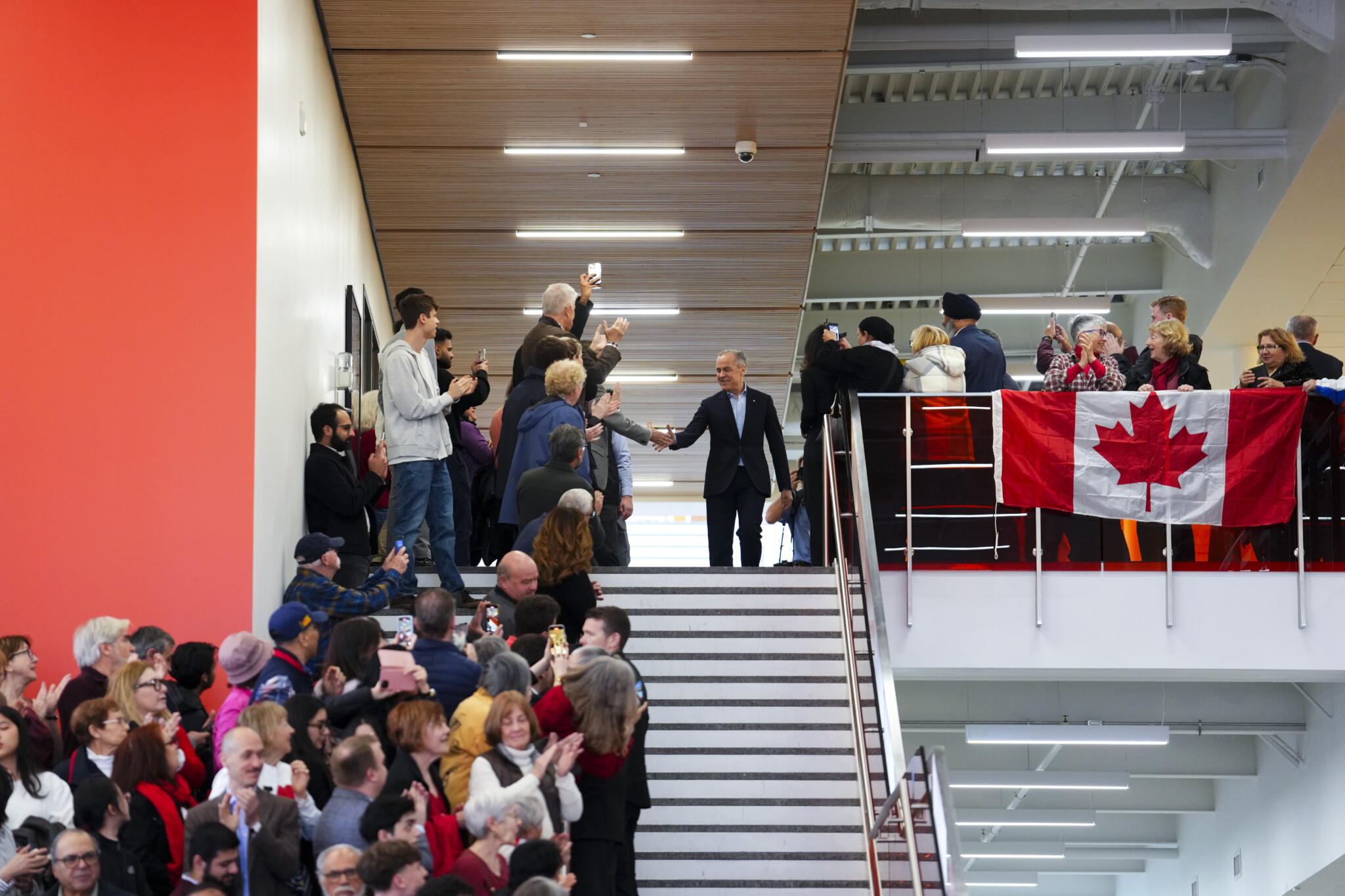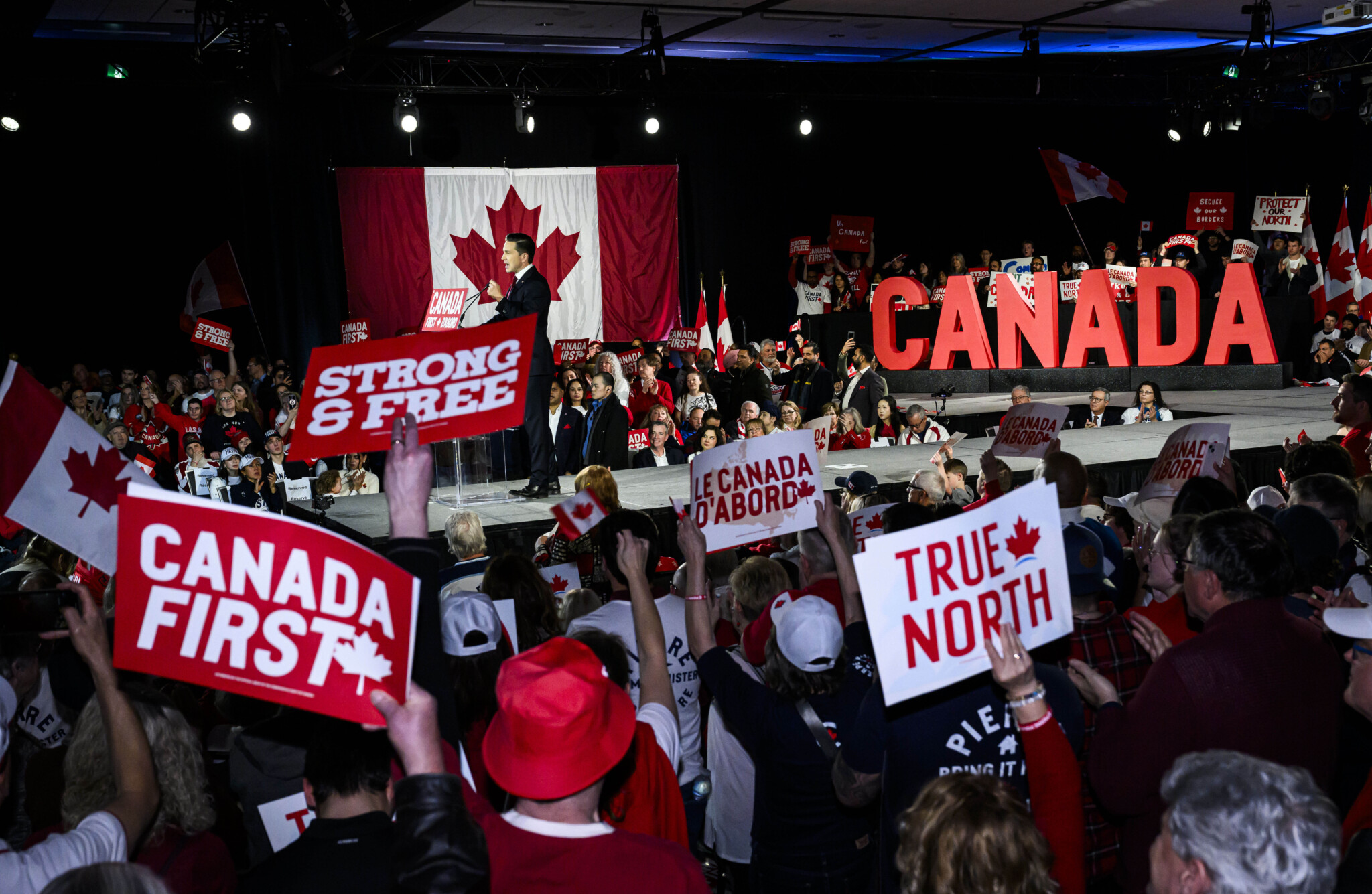Sometime in mid-February 2022, I found myself having trouble sleeping. So I did what I often used to do; I got up and started putting onto paper a few thoughts that had been floating around in my head. The resulting piece, titled “Going after Canada’s elite gatekeepers could be a winning strategy for the next Conservative leader,” made the case for a broad new coalition and messaging strategy for a Poilievre-led Conservative party.
In short what I argued was that the “gatekeepers” were an effective framing tool to accurately describe the sclerotic and privileged elites who stifle this country in so many ways—from NIMBYs to bureaucrats to rent-seeking corporate interests. By blocking housing, pushing for out-of-control immigration, stifling economic growth, and shutting down resource development, Canada experienced a “lost decade” where younger people, new Canadians, and working-class Canadians feel that Canada no longer lives up to its promise.
And the effectiveness of this message was that it combined a conventional conservative message with something new that could expand the potential Conservative voting coalition by scratching the populist itch in a reasonable way:
Put all this together, and Poilievre may have the makings of a perfect message. It scratches the itch of different parts of the conservative coalition, and it has the potential makings of a winning electoral coalition that could propel the Poilievre-led Conservatives to government. Whilst appealing to both small government and populist types in the conservative movement, it also potentially offers a populist message that appeals to people who feel left behind or screwed over in Canada today, with ire aimed at a clique of gatekeepers who frustrate the goals and aspirations of ordinary Canadians.
I also argued that this message would resonate with people not typically expected to be Conservative voters, namely, younger Canadians and new Canadians.
Six months later, I took a role working with the new leader of the Opposition as his director of communications. Fast forward to April 28, 2025, and the Conservative team I was a part of ultimately lost an election that it had looked like we were going to win four months prior, largely because of Trump.
The coalition I described is now very much the new Conservative voting coalition—the Poilievre coalition. It wasn’t enough to win this time, but it is cohesive, has the potential to endure and expand, and represents not just the future of the Conservative Party but the future of Canada.
In the inevitable soul searching after a disappointing loss, it is vital we don’t abandon this coalition and the breakthroughs that were made. The election saw a fundamental realignment of Canadian federal politics, one long in the making. It began before Poilievre, but he both accelerated and solidified it.
The Poilievre coalition
The Conservative Party received 41.3 percent of the vote, the highest popular vote in decades, and won 24 more seats. It wasn’t enough, but there were significant breakthroughs in Ontario and British Columbia. This was driven by a very different voting bloc than has previously been the Conservative voting coalition. The new Poilievre coalition is much younger, more diverse, and more working-class than previous Conservative voting coalitions.
What drove these new voters to the Conservatives?
In the last decade, housing costs have doubled, and Canada has experienced no real economic growth outside of asset inflation and high immigration levels being used to pump up Canada’s raw GDP. Canada’s per-capita GDP has seen only a 2 percent increase, lagging far behind the 17 percent growth in the U.S., with $460 billion of investment leaving for the U.S.
Housing costs have doubled, rising faster than in any other G7 country, making homeownership increasingly unaffordable—requiring an income of nearly $250,000 to qualify for a mortgage in Vancouver and about $220,000 in Toronto—while new home construction has declined since the 1970s, leaving Canada with the fewest homes per capita in the G7. This situation has resulted in a generation largely locked out of homeownership. Meanwhile, wages have stagnated, and taxes have risen on the average household by about $10,000 over the past decade.
If you bought a house before 2008 and are 60, you didn’t really experience a lost decade. But if you’re young and looking to buy a house, Canada feels like a place where the system is stacked against you. Poilievre’s relentless focus and messaging on these issues, and innovative use of digital platforms, allowed him to reach these alienated and left-behind Canadians. And they voted in record numbers.

Leader of the Conservative Party of Canada Pierre Poilievre shakes hands with supporters prior to speaking at a media event in Saskatoon, Sask., Friday, April 25, 2025. Liam Richards/The Canadian Press.
This message not only resonated with Millennials and Gen Z, but with another group of Canadians who share the same frustrations: new Canadians. The people who come here to build better lives increasingly find themselves struggling to do so.
Post-election analysis suggests that new and younger Canadians helped drive major breakthroughs for Conservatives in the GTA, where cost of living, housing, and rising crime are most salient. And with these issues unlikely to go away any time soon, Poilievre’s message and relentless focus on these issues will continue to resonate.
The other decisive breakthrough is bringing in working-class and blue-collar workers, flipping seats in rural British Columbia, Northern Ontario, and Southern Ontario, many of which used to be NDP strongholds. These voters don’t have white-collar postsecondary credentials, work in trades or with their hands in more physical jobs, and live in places where broader economic shifts have driven away manufacturing jobs. Poilievre also received an impressive slew of union endorsements, something that would have been unheard of in previous elections.
A cohesive coalition
For political coalitions to endure, they have to make sense. There has to be something that glues the constituent parts together. Too often, political analysts and pundits think about coalitions in terms of ideology. An ideological basis may be needed to craft a coherent agenda, but the best way to think of coalitions, and Poilievre’s coalition especially, is shared interests and concerns.
There has been much discussion of the working-class realignment in recent years, and Poilievre’s coalition of the forgotten and left-behind represents the next unique step in this realignment.
What young Canadians and new Canadians share with working-class Canadians is living in a country that doesn’t work for them anymore. To paraphrase a brilliant piece of rhetoric Poilievre often deployed: the “deal” that this country offers has been broken.
For Poilievre’s coalition, life is much harder than it was a decade prior. They can do everything that is expected of them: work hard, save money, and get a good job. Yet for many, this isn’t enough to offer the life their parents had. Or not enough to build the life they thought they expected when they moved here. And it has all sorts of downstream effects—the inability to buy a house may delay family formation, for instance. Some may miss out on it altogether. Poilievre took some heat during the election for the way he made this argument, but the argument is fundamentally correct.
The reason this messaging resonates, binding this diverse coalition together, is because Canada has become a sclerotic economy that works for some and doesn’t work for others. House prices, an unattractive investment environment, strangled by burdensome and cumbersome overregulation, ever-increasing taxes, and the enormous expansion of the public sector have suffocated the kind of dynamism, innovation, and growth that, while seeming abstract, lead to the real jobs, opportunities, and wealth creation that enable strivers, entrepreneurs, and the people who work hard and do everything right to build their lives.
The Carney coalition
Something must also be said of the coalition that propelled Carney to government, as it, by contrast, helps us understand the Poilievre coalition. During the campaign, a picture, the “Brantford Boomer” smiling and flipping the bird, went viral and became the personal embodiment of Carney’s new core coalition.
This coalition is older, whiter, wealthier, well-established, and, unlike the Poilievre coalition, has been insulated from Canada’s lost decade. These people bought houses decades ago that are now worth 20 times what they paid for them; they called for ever-more restrictive COVID lockdowns because they had large backyards and were probably on the tail end of their careers and not too worried about income. They are the sort of people who found the nostalgic “elbows up” nationalism appealing because it reminded them of a Canada that existed in their youth. Canada works quite nicely for these people.
Howard Anglin (whom, full disclosure, I had the distinct pleasure of working alongside during the Conservative campaign) has described these two coalitions as “the new two solitudes.” Now, it must be said that a lot of the people who are now part of the Carney coalition are lost Conservative voters. The society where these kinds of cleavages define our new political landscape is not a healthy one. It will foster generational resentments, divisions, and anxieties that will further fuel resentment and alienation.
While it might seem counterintuitive, the Carney-Liberal coalition is a fundamentally reactionary one. It remains committed to preserving what you could generously call the “status quo” or less generously call “managed decline.” It is in its interests for asset inflation to continue, for unsustainable levels of immigration to support the existing welfare state, and for none of the structural reform needed to reenergize the Canadian economy.
The Poilievre coalition, however, is the coalition of the future. It is the demographic future of Canada, but also the coalition that believes in and demands a better future. It cannot afford decline and demands change. And it’s not going anywhere.

Liberal Leader Mark Carney makes a campaign stop at Seneca Polytechnic in King City, Ont., Saturday, April 26, 2025. Sean Kilpatrick/The Canadian Press.
The Poilievre coalition is a lot more cohesive than the Carney coalition. While the Carney Liberals siphoned off a large swath of progressive, urban voters in this election, Carney will be pulled in two directions as prime minister. Many seem to think that what he and his new Boomer base want is one and the same: a return to Chretien/Martin style blue liberalism.
But if you look at the Carney who existed six months ago and look at the progressive current in which the rivers of liberalism now flow, don’t be surprised if he continues the Trudeau legacy of progressive liberalism that will not please the reactionary Boomer base. It remains to be seen what exactly “Carneyism” looks like, and while it came together as an anti-Trump and anti-Poilievre coalition, its material and ideological basis seems much more incoherent moving forward than the Poilievre coalition.
Completing the Poilievre coalition
In any other election, getting 41.3 percent of the popular vote would have been enough to propel Poilievre to victory, but this was not a normal election. For Poilievre and the Conservatives, keeping the new coalition together depends on a weakened NDP. Poilievre completed the realignment of working-class and blue-collar workers that has occurred throughout other advanced democracies.
What that means is that if the NDP is to have a future, it is much more likely to be the party of progressive urbanism than anything else. But a federal NDP that becomes an urban progressive remnant is not one likely to get back to 20 percent in the polls anytime soon. We should assume that a two-party system is here to stay, and thus we should be looking to expand the Conservative coalition.
Perhaps the obvious option for Conservatives should be trying to win back some of the older, more comfortable voters who used to be the safest and most reliable Conservative voters. Many will make this case, but my view is that we must go in a different direction.
To build on the Poilievre coalition, we must think about who can be added in a way that keeps it cohesive with shared material interests. While there is much more to say about this, and while other voices than my own should lead the fight on this, I will posit that the biggest group that could be added to this coalition is female voters. Many women share the same concerns about the broken deal in this country and face the same challenges of the lost decade. But Conservatives have not been as good at speaking to these voters as they have to others.
The priority moving forward should be to make sure the Conservative message speaks to and is not off-putting to women.
Even though it wasn’t enough in this election, Poilievre achieved important breakthroughs that must be built on. The coalition he put together is new and represents the future. As we figure out how we get over the finish line at the next opportunity, we should be expanding the Poilievre coalition in a way that makes it big enough to win—and cohesive enough to sustain that victory.









